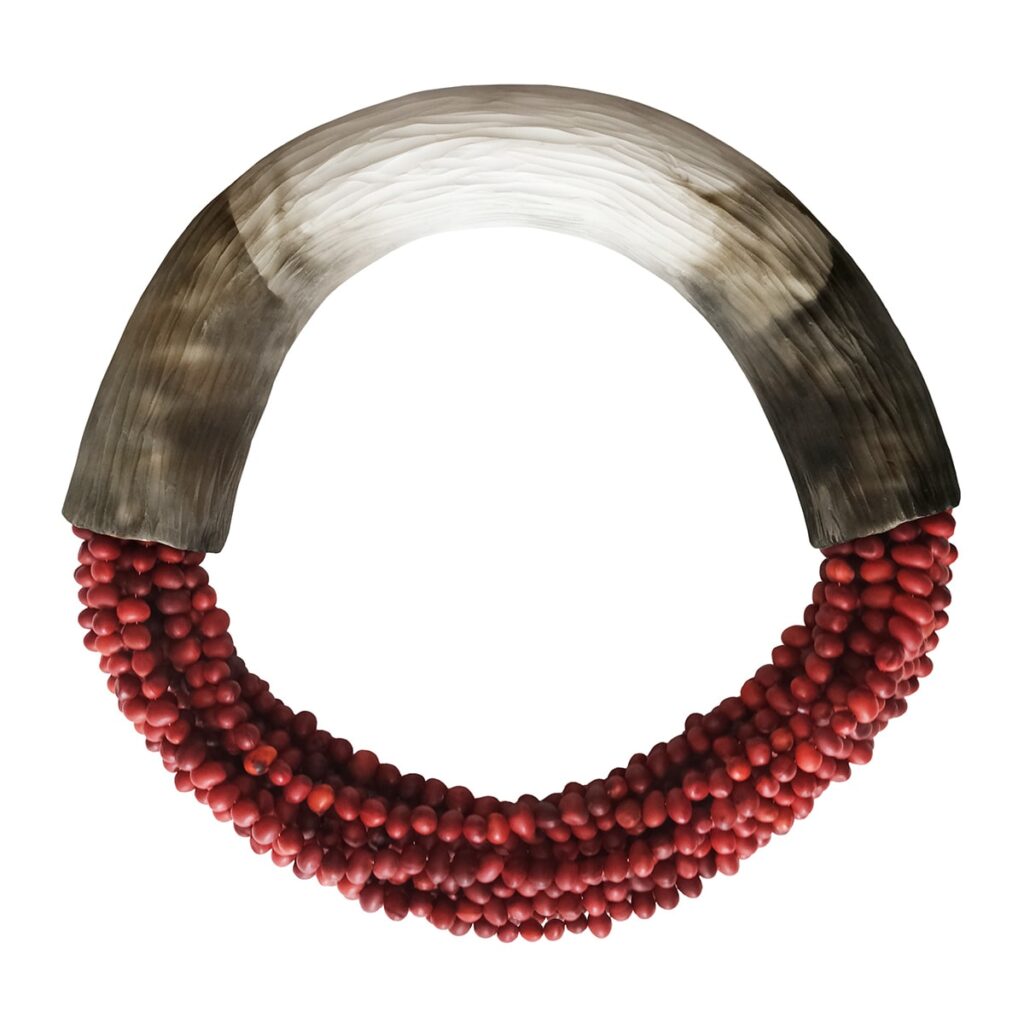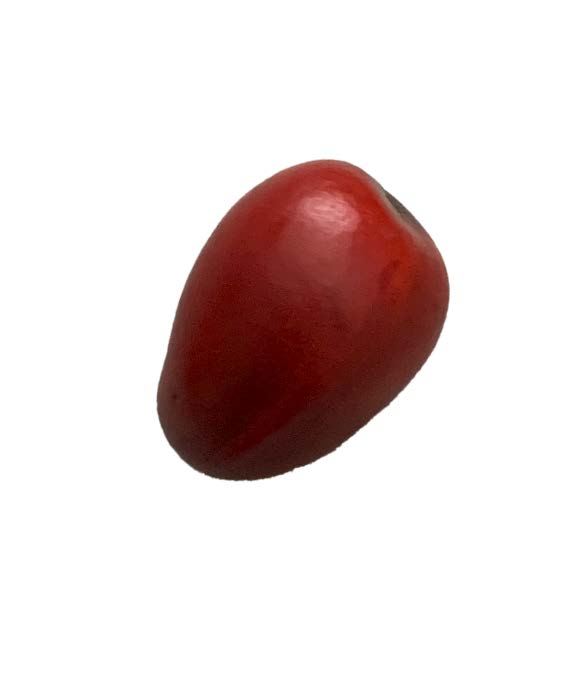

The Red Bean Dance
The mescal bean is the seed of the mountain laurel, a shrub native to the drier regions that grows throughout much of northeastern and north central Mexico. Mescal beans were brought into the shelters in the Lower Pecos region 6,500 years ago and possibly even earlier. Their purgative effects and other sensory inputs helped seers reach a culturally defined condition to receive visions.
The Mountain Laurel Seed’s extreme physiological effects likely made it a powerful plant worthy of trade and decorating ritual clothing. There is tremendous time depth for the use of the mescal bean and for its cultural significance among Native Americans in the territory now known as Texas and Mexico, as noted by archeological records. These groups included the Pawnee, Wichita, Iowa, Oto, Omaha, Ponca, Missouri, and Osage.
Several tribes used the mescal beans in a vision-seeking “Red Bean Dance,” centered around ingesting the potent seeds. The vivid red mescal beans were found at archeological sites dating back to 1500 BC. The beans were pounded to a fine consistency for the ceremonial traditions and made into a medicine brew. After drinking the red bean decoction, the members danced until dawn.
The sacred narcotic plant enabled the shamans to contact or channel spirit beings–gods, images, and animal spirits. These spirits provided advice and guidance on hunting and other issues, purifying their spirit, and connecting with nature’s consciousness.
The sculpture evokes ancient sacred healing rituals. The artist chose porcelain, a soil clay that comes to life using fire. The smoke symbolizes the ceremonial purification, and the mescal beans harvested by LeMay highlight the sacred plant’s beauty and undeniable intelligence.
After spending more than a decade documenting nature’s grandiose intelligence through her digital hypercollage, LeMay decided to deepen her relationship with mother nature by using biomaterials exclusively to create large sculptures.
For the Dream Job exhibition, the artist brings to life a prototype of one of the larger-scale sculptures she wants to complete in 2022-2023. For this exhibition, she shares another dream, to collaborate with other artists. On this project, LeMay worked with Austin-based ceramist Mimi Bardagjy.

